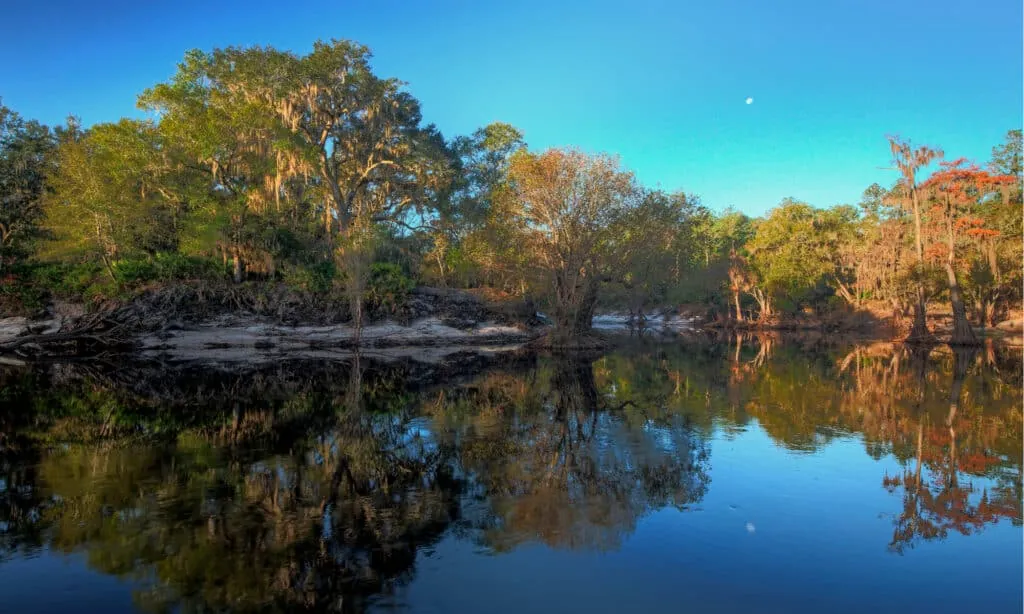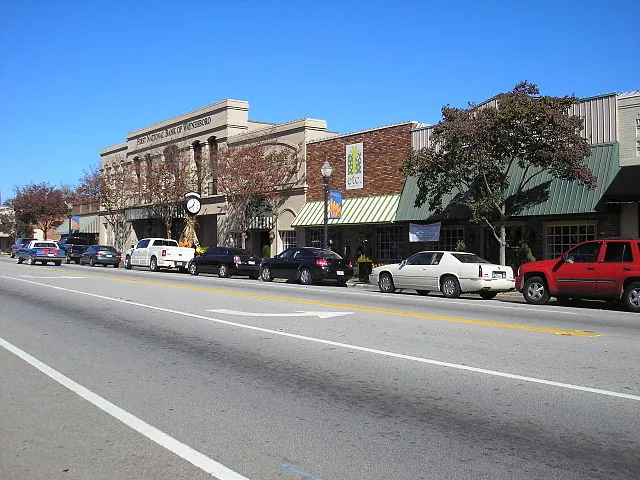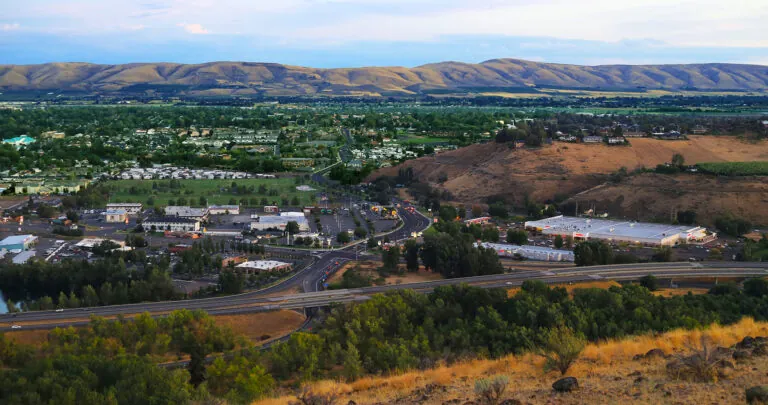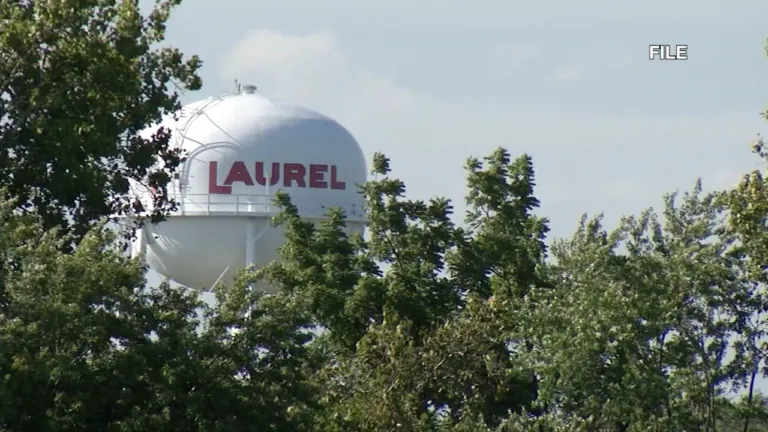Discover the 10 Fastest-Shrinking Counties in Florida in 2023
In recent years, Florida has experienced a significant surge in population growth, which has continued even amidst the pandemic. People from all over the country are flocking to various cities across the state. According to a recent report, Florida’s population is projected to increase by more than 5.6 million people from 2010 to 2030. However, despite this overall growth, there are certain areas within the state that are experiencing a decline in population, with some counties shrinking at a faster rate than others.
Individuals moving to Florida from other parts of the United States are primarily settling in highly desirable cities that offer abundant opportunities. As a result, smaller and more remote counties lacking a major metropolitan area have been left behind and are experiencing a decline in population.
Learn about the top ten counties in Florida that are experiencing the fastest population decline by exploring our comprehensive list.
1. Gulf County
Located in Florida’s northwestern corner, Gulf County has experienced a significant population decline of 10.4% from 2010 to 2020, according to the latest U.S. Census data. This is in stark contrast to the country’s population growth of 7.3% and Florida’s population increase of 15.6% during the same time period.
During the pandemic, Gulf County experienced a migratory shift that brought people back to the area, resulting in a population increase of 7.8% between 2020-2022. It’s worth noting that the population of Gulf County is relatively small at around 15,000, so even a small number of people leaving or returning can cause significant percentage shifts.
Gulf County, located on the Florida Panhandle, offers a unique experience for vacationers as it is one of the only regions that faces the west and provides stunning sunset views. The region has plenty of natural attractions to offer, including local state parks, campsites, and exciting water activities. For wildlife enthusiasts, the region is home to a variety of native species, such as alligators, turtles, different bird species, dolphins, and even manatees, making it an ideal spot for wildlife spotting and nature lovers alike.
The St. Joseph Peninsula in Gulf County is experiencing a gradual decrease in its population, as witnessed by the stunning sunset over the area.
2. Hardee County
Between 2010 and 2020, the population of Hardee County dwindled by 8.7%, dropping from approximately 27,731 to 25,313 residents. While the county has seen a slight uptick in population since 2020, recovering about 1.3% of the loss, it continues to lag behind other counties in Florida that have not experienced such a significant decline.
Deep in the heart of Central Florida lies Hardee County, known as “Bone Valley” due to its abundant phosphate deposits. Tourism is a major contributor to the economy of this region, which is part of the Florida Heartland. Tourists can visit the Sebring International Speedway or explore the natural wonders of the area. Hardee County is home to a diverse range of flora and fauna, including the Florida panther, green treefrog, armadillos, and iguanas.
The tranquil waters of Peace River located in Hardee County, Florida provide a peaceful abode for aquatic animals like the green treefrog.
3. Lafayette County
Located in the north-central region of Florida, Lafayette County is a small county with a population of just over 7,700 people in 2022. However, the county has experienced a decline in population over the years, with a 6.3% decrease between 2010 and 2020. In the last two years, the population of Lafayette has decreased by another 5.3%, making it one of the fastest-shrinking counties in Florida.
Lafayette County is unlike its neighboring counties as it strictly adheres to prohibition laws. This means that the sale of all alcoholic beverages, except beer, is not allowed. However, the town of Mayo, the only town in Lafayette County, boasts a variety of restaurants and accommodations for visitors to explore. Visitors can also take in the beautiful wildlife and natural sites in the area. One must-see destination is the Lafayette Blue Springs State Park, which is home to the stunning Lafayette Blue Springs. Hikers who take on the Suwannee River Wilderness Trail may also encounter native alligators, turtles, and even American bald eagles.
Although bald eagles are not a common sight in Lafayette County, they do reside in the region.
4. Calhoun County
With its close proximity to the state capital, Tallahassee, Calhoun County in Florida is one of the least populated areas in the state. Over the past decade from 2010-2020, the region witnessed a departure of about 7.1% of its population, followed by a further 1.3% loss from 2020-2022. As of the latest count, only 13,464 people reside in the county.
Calhoun County is not intersected by any highways or interstates, which means that visitors can only access the region by cruising down Interstate 10 from nearby Jackson County. While this may make it challenging to visit, the remoteness of the area is well worth the travel for those looking to kayak in the clear rivers that Calhoun has to offer. Additionally, tourists can explore the natural areas of Calhoun County, which are home to over 127 rare animal species.
Lafayette County is graced by the presence of the Suwannee River flowing through its parts.
5. Madison County
According to the latest census data, Madison County, FL, which is known for its southern charm, experienced a significant drop in population over the last decade. Between 2010 and 2020, the population decreased by 6.6%, and only 1.3% of the residents returned between 2020 and 2022.
With a population of about 18,000 people, this quaint town may be experiencing a decline in numbers, but it still has a lot to offer tourists. Madison, the county’s seat, is renowned as one of Florida’s most charming towns, with a plethora of restored historic homes and buildings located in its downtown area.
The Aucilla River, the Withlacoochee, and the Suwannee rivers beautifully encircle the region, offering a plethora of exciting activities like fishing, kayaking, and water sports. Interestingly, in 2015, the Madison Blue Springs State Park, located nearby, was crowned as the best swimming hole in the United States, according to USA Today.
Taking a dip in the crystal-clear waters of Madison Blue Springs offers a truly refreshing and enjoyable swimming experience.
6. Glades County
The population of Glades County, named after the Florida Everglades, decreased by 5.4% between the 2010 and 2020 U.S. censuses. However, over the past two years, it has managed to regain 2.7% of its population. Despite this, the county still has a relatively small population of 12,268, making it the fourth-least populated county in the state.
In 1921, Glades County was established and it is now one of the five counties surrounding Lake Okeechobee, one of the largest lakes in Florida and the second-largest lake in the continental United States. This shallow and marshy lake is a natural habitat for a wide variety of animal and fish species as well as floating aquatic plants like hydrilla. If you take a hike along the Lake Okeechobee Scenic Trail, you may come across wading egrets, alligators, and ibises.
If you happen to be near Glades County, Florida, keep an eye out for the elegant white birds known as egrets, who can often be seen leisurely strolling through the shallow waters of Lake Okeechobee.
7. Gadsden County
With its picturesque rolling hills and beautifully restored Victorian homes and structures, Gadsden County sprawls across the northernmost part of Florida’s central Panhandle. Currently, the county is home to around 43,400 people. Unfortunately, the 2010-2020 census period saw a decline of 8.6% in the county’s population, with little change reported in the 2020-2022 census report.
If you’re a nature lover searching for breathtaking outdoor recreational areas, Gadsden County offers a plethora of options to explore. Lake Talquin is a haven for fishing enthusiasts, with a variety of fish species such as Northern pike, black crappie, and striped bass to catch. In addition, Pat Thomas Park is an excellent location for camping with stunning views of the surrounding woodland wildlife and diverse bird population.
With its tranquil and unspoiled surroundings, Lake Talquin provides visitors with a serene and laid-back atmosphere. Popular among anglers, this lake is renowned for its exceptional black bass and crappie fishing.
8. Hamilton County
Located in the North Central region of Florida, Hamilton County shares its southern border with Georgia. The county is uniquely isolated from the rest of the state, as its western and eastern borders are formed by the Withlacoochee and Suwannee Rivers, respectively. Unfortunately, this isolation has contributed to its status as one of the fastest-shrinking counties in Florida. According to recent data, Hamilton County lost 4.8% of its population between 2010 and 2020, and an additional 5.6% as of 2022.
Hamilton County may be a small place with a population of roughly 13,000 residents, but there’s no shortage of things to do and see. The scenic Alapaha River, along with the two other rivers that form the county’s borders, offer an array of exciting water activities like fishing and kayaking. Whether you’re coming from Jacksonville or Tallahassee, Hamilton is easily accessible, making it an appealing destination for those who wish to escape the hustle and bustle of city life.
Hamilton County is home to one of the longest rivers in Florida, the Alapaha River.
9. Jackson County
Named after President Andrew Jackson, Jackson County in Florida is one of the oldest counties in the state. However, despite its long history, the county has experienced a population decline of 4.9% from 2010 to 2020. As of 2022, the population has only recovered by 1.9%. For perspective, Florida’s overall population grew by 14.5% during the same time frame, making Jackson County’s population decline one of the fastest in the north-central region of the state.
Jackson County may be a predominantly rural area, but it boasts of a rich historical heritage and well-preserved landmarks that are worth exploring. One of the popular activities that travelers look forward to when visiting Jackson County is scuba diving and fishing, which can be enjoyed in the nearby Blue Springs Recreational Area or Lake Seminole. The county’s ecosystem is home to various animals, including bluegill, largemouth bass, grackles, and red-shouldered hawks.
Jackson County’s Lake Seminole is a haven for fishing enthusiasts, offering an abundance of game like largemouth bass and bluegill.
10. Liberty County
In the past decade, Liberty County, the smallest county in Florida, has seen a continuous decrease in its population. According to the latest decennial census report, the population of Liberty declined by 4.5%. As of July 2022, the county’s population dropped further by 4.7%, bringing the total number of residents to just 7,600.
Located in the central section of the Panhandle, Liberty County is a popular tourist destination, offering many attractions for visitors and residents alike. One unique aspect of the county is that it is one of only two dry counties in Florida, completely prohibiting the sale of alcohol within its borders. However, this does not hinder the fun and excitement Liberty has to offer. The stunning Apalachicola River, which borders the county, provides a plethora of opportunities for water sports and boating activities. Additionally, the river’s waters extend outwards into picturesque creeks throughout the county, offering a beautiful and serene environment for nature enthusiasts.
The region of Liberty County has a vast expanse of land, covering nearly 989 square miles, with a significant portion of it overlapping with the Apalachicola National Forest. This forest is an abode to various species, including over 100 local bird species and endangered Torreya trees.
Florida’s largest forest, Apalachicola National Forest, covers a vast area that extends significantly into Liberty County.







